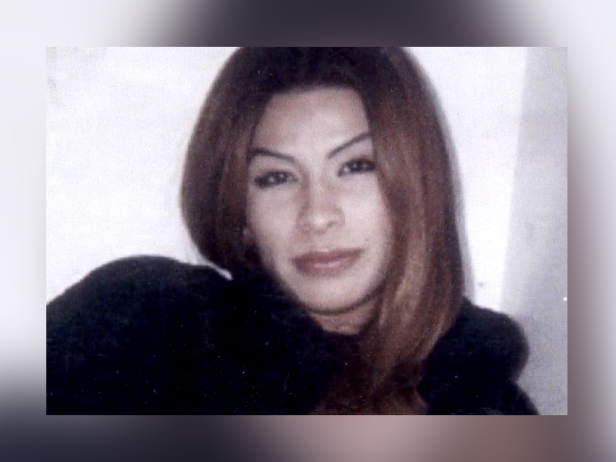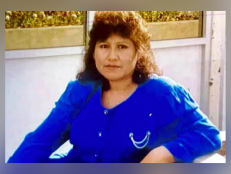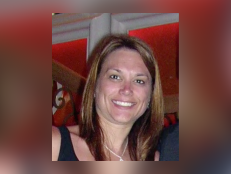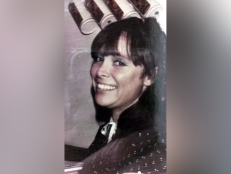Transgender Teen Gwen Araujo ‘Has Literally Saved Thousands Of Lives’ Since Her 2002 Murder, Mother Says
Her daughter’s death “was the beginning of a life sentence for me and my family,” Sylvia Guerrero recalls.

Warner Bros. Discovery, Inc. (Screenshot from ID's "Fatal Encounters")
The mother of a transgender teenager in California murdered over two decades ago while at a party has vowed not to let her daughter’s death be in vain.
“My daughter in 2002 brought the trans community to the forefront, and changes began since then,” Sylvia Guerrero told The Mercury News. “In her death, she has literally saved thousands of lives. I can’t tell you how many people have told me, because of your daughter, I am free to be who I am.”
Over 20 years ago, on the evening of Oct. 3, 2002, Gwen Araujo, 17, attended the party at the Newark home of Jose A. Merel, then 22. Guerrero reported the teenager missing two days later after she failed to check in.
A short time later, police acting on a tip confronted a man who also attended the party, Jaron C. Nabors, then 19. He led police to Araujo’s body in the Sierra Nevada foothills in El Dorado County, which is located around 150 miles east of where the victim was last seen alive. Araujo had been hogtied, bludgeoned, strangled to death, and then transported to the remote location to be buried beneath rocks in a shallow grave, The Mercury News reported.
“When Gwen was murdered that night, it was the beginning of a life sentence for me and my family,” Guerrero told the publication.
According to Queer Silicon Valley, Araujo’s mother released 17 butterflies at her daughter’s funeral, each symbolizing one year of life lived. Some students from Newark High School attending the service came dressed as angels and attempted to keep anti-transgender protestors away from the grieving family.
Police eventually charged Merel, Nabors, and two other men who were at the party — Michael W. Magidson and Jason Cazares, both then 22 — with Araujo’s murder.
In 2003, Nabors agreed to testify against the other three defendants in exchange for pleading no contest to a reduced charge of involuntary manslaughter, KNTV reported.
The following year, Merel, Magidson, and Cazares went on trial for Araujo’s murder. Their defense teams argued the slaying was a crime of passion committed in a “panic” in the heat of the moment. The judge declared a mistrial after the jury was hopelessly deadlocked following 10 days of deliberation.
During the retrial in 2005, Alameda County’s then-deputy district attorney Chris Lamiero, again claimed in court that two of the defendants had a sexual encounter with Araujo the night she died, The New York Times reported.
After the men learned Araujo was transgender, the prosecutor argued, Magidson strangled the teenager, and Cazares bludgeoned her in the head with a shovel. According to the prosecution, Merel allegedly felt intimidated, so he went along with the brutal attack on the victim.
Cazares’ attorney countered that his client had nothing to do with the murder and was smoking outside when Araujo was killed, The Times reported.
In September 2005, Merel and Magidson were both convicted of second-degree murder but acquitted of committing hate crimes. The pair each received sentences of 15 years to life.
The jury deadlocked on Cazares’ fate for the second time, but he pleaded no contest to voluntary manslaughter in order to avoid a possible murder sentence at a third trial. He was given six years behind bars.
In exchange for his testimony and no contest plea, Nabors was ordered to spend 11 years in prison.
Cazares, Nabors, and Merel are no longer in custody, while Magidson was denied parole after a 2019 hearing, during which he reportedly said he was sorry for his part in Araujo’s slaying for the first time, according to the Bay Area Reporter.
As a result of Araujo’s death, in September 2006, California legislators passed the Gwen Araujo Justice for Victims Act, a bill requiring jurors be informed that they can make no decisions on a case based on the victim’s sexual orientation or gender identity.
Other laws were passed in the state, including one in 2014 that bans the use of so-called “panic” defenses in criminal court that attempt to place the culpability of violence committed against a victim on the victim’s gender identity or sexual orientation.
In the years following Araujo’s homicide, Guerrero said she made it her mission to ensure her daughter “didn’t die in vain.”
Despite the trans community making some progress, Guerrero explained that “people like Gwen are still being murdered for who they are and there’s families who are suffering like we are.”
“We have a long way to go before a trans person can be free to live their lives, to live out their dreams and goals like they deserve,” she noted.
Araujo’s story is depicted in an episode of ID’s Fatal Encounters, streaming on discovery+.
How The 1991 Brutal Hate Crime Murder Of Paul Broussard Changed One Texas Community
The murder victim “could have been anybody’s son, anybody’s brother,” says a former Houston mayor.

![Holly Clouse as a baby [left] and Holly Clouse now at 42 years old [right].](http://investigationdiscovery.sndimg.com/content/dam/images/investigationdiscovery/crimefeed/legacy/2022/06/NCMEC-holly-clouse-06102022.png.rend.hgtvcom.231.174.suffix/1654876785793.png)

![Natalee Holloway [main photo] disappeared on her senior class trip to Aruba in May 2005. Now, Joran van der Sloot [inset] finally confessed to her murder.](http://investigationdiscovery.sndimg.com/content/dam/images/investigationdiscovery/crimefeed/legacy/2023/10/fbi-natalee-holloway-102423-AP-joran-van-der-sloot-100604119865.png.rend.hgtvcom.231.174.suffix/1698172052978.png)






